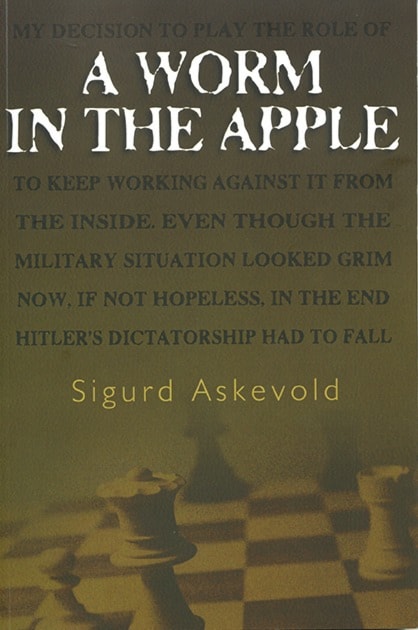I was excited to start my weekend when I received a copy of a long-awaited book written by a former Creston teacher, the late Sigurd Askevold.
I learned only recently that Askevold had completed a manuscript in 1984 documenting his experience as a German soldier in World War II. He wrote the original draft in German, then translated it to English. He asked a former student to read it, and later asked if she would edit it. Luanne Armstrong, in her forward to A Worm in the Apple, explains that she didn’t feel she had the necessary skills at the time.
The Askevold family only recently asked her to take on the editing task and to arrange for the book’s publication.
I did not know Sigurd well, but his reputation as a teacher, peace activist and brilliant man became known to me soon in our early years in Creston. I remember when he and Alex Ewashen embarked on a 50,000km global tour promoting peace in the 1980s.
Our family did have a close connection to the Askevold family, though. Sigurd’s wife, Imme, became our first family physician, and delivered both of our sons. Ryan, our second, was born in 1983 and I believe he was Dr. Askevold’s last delivery.
I learned from Luanne Armstrong that she was editing Sigurd’s manuscript shortly after I read and reviewed another brilliant war-time memoir, Window to Freedom, by Marian Wiacek. I was completely smitten by that book and I have been waiting hopefully for the Askevold book ever since.
When it arrived on my desk only the day after it was delivered to Creston from the publisher, I knew exactly how I would be spending the weekend.
A Worm in the Apple starts with Sigurd’s memories as a teenager (he was born in 1917), witnessing the rise of the National Socialist Party and its leader, Adolf Hitler, to power in the 1930s. His father was an activist and, acting on good advice, made the difficult decision to escape to Norway before the Nazis could capture him.
Ingolf-Birger Askevold left his family behind, but not before imparting his anti-war beliefs on the young Sigurd.
Sigurd had an uncommonly sharp understanding of what was happening around him, and what actions he had to take if he wanted to survive the inevitable next war. It is impossible to truly appreciate the internal struggles he went through before succumbing to enormous pressure and joining a Hitler Youth organization. It was no different later when he joined the German army, knowing that not to do so could cost him his life.
What follows is a tale that has all the makings of a movie. His unit played a role in the invasion of Austria, then Poland and France. Eventually, he would be part of the most dangerous move of all, the march north to Stalingrad.
From the time he first put on a uniform until he became a prisoner of war as the Allied efforts finally turned the tide, Sigurd was a fly in the ointment or, as he says, a worm in the apple, using his wits and courage to annoy his superiors and sabotage their actions in every way he could dream up. His description of skiing down a snow-covered mountain road and coming up behind two officers on foot is worth reading the entire book. Sigurd swerved to body check one, who then collided with the other, the impact sending them both down an embankment as he schussed past, too fast to ever be identified.
A combination of wits and personality enabled him to survive by avoiding being assigned to the front lines. He played chess and made friends on both sides of the war and used his facility with language to become an interpreter, garbling messages before sending them on to his superiors. He survived starvation conditions in a French prisoner of war camp (where his weight dropped to about 75 pounds) and somehow never lost his sense of self. Who else would have talked his way into a mid-war leave so he could take a semester of university studies, where he would then meet his future wife, Imme?
Part James Bond, part Indiana Jones, part Martin Luther King, Sigurd was a hero in every sense of the word, one of an uncountable many Germans who wore a Nazi uniform as their only way to survive, all the while playing a part in largely invisible internal resistance movement.
In A Worm in the Apple, we learn of history as it is best learned, from the eye level of a man who saw more than humans are meant to see, and who never gave up hope. This, much more than the omniscient view of historians, is a history we can truly learn from. Sigurd Askevold’s memoir, with thanks to Luanne Armstrong’s considerable editing skills, is at once a chilling reminder of humans at their worst, and a soaring message of what can be accomplished with a clear mind and a big heart.
To read A Worm in the Apple is to find hope in a time when it can at times seem non-existent.
